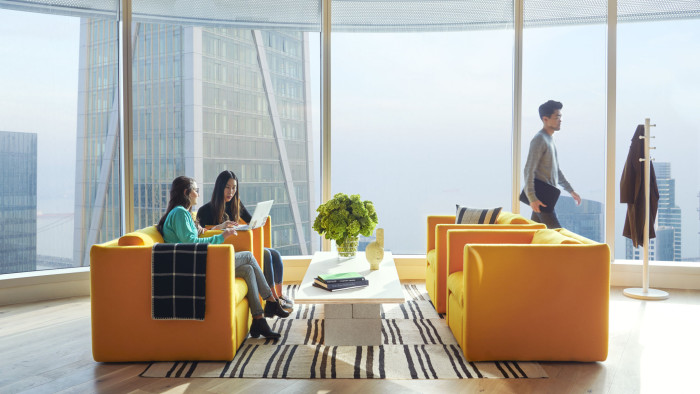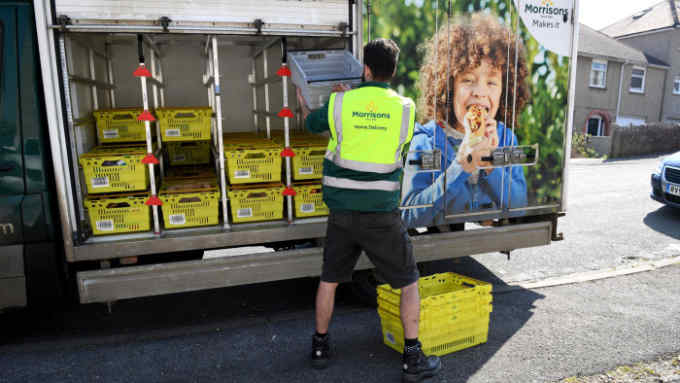Q&A: Will office life be split into pre- and post-pandemic eras?

Roula Khalaf, Editor of the FT, selects her favourite stories in this weekly newsletter.
When we asked FT readers for their thoughts on whether we are heading into a new phase of history — and leaving behind old office norms forever — we got some thoughtful, and contrasting, responses.
Our starting point was Professor Lynda Gratton of London Business School, who writing in the FT, suggested that “during this short period of time [lockdown] we have altered a host of attitudes, behaviours and skills which will inform our future”.
What are those alterations? One increasingly analysed aspect of the lockdown is its differing impact on different age groups in the workforce. As an FT reader writes under the pseudonym White Rabbit:
Will an age divide develop at broadly 40 or so? This would reflect younger people with less health risk being more comfortable going into offices and visiting bars and restaurants after work, and also having more focus on developing their careers. Older people may be more cautious and perhaps see wider lifestyle benefits in working from home.
The social and lower-risk profiles of younger workers might seem to make many of them better candidates for returning to workplaces en masse, and leaving the Generation Xers and Boomers at home.
But it might not be so clear cut: the latter two groups of workers may want to get back to the office once they have childcare/schooling in place, or to resume their clearly delineated work and home life.
Everyone, it turns out, is different — and the formerly rigid 9-5 structures of office working may be gone forever. S. Pal writes on the sudden importance of flexibility, and why employers should ask their staff what matters to them:
Employers today know that employees want flexibility, and many companies say they offer it. But many employees out there who need flexibility don’t get it. We already know 3 ways employees are affected by a lack of flexibility at work: Health and wellness, Care giving and Productivity. We also know the negative implications for companies not providing the flexibility their employees seek, such as: Employee retention; Advocacy, Engagement and Diversity of thinking. Shouldn’t companies ask employees what they prefer and prioritise closing their flexibility gaps?
If companies rethink existing structures and enable a far more collaborative approach to the working week, the post-pandemic office may well be a more dynamic and creative place than it ever was before. Here’s Hjgjz with some ideas on how that might work:
We need to split jobs/roles into tasks, differentiating between those where productivity is at least as good when working remotely, and those where creativity and collaboration are enhanced through the face to face interactions. Have we got the tools to do that? Some jobs consist entirely of one or other category, but many will mix tasks in both categories.
Having done that, how can we structure work to synchronise in the right way? What if my need for collaborative creativity in the office is at a time when you are looking to be productive at home?
One way to synchronise our work might be to change physical work environments after the pandemic and offer a wide range of choices: fewer desks, and more meeting rooms and social spaces (assuming we can one day return en masse).
This then starts to sound suspiciously like another pre-crisis phenomenon. As Hjgjz suggests, this vision “sounds as though you are looking for WeWork for your workplace, with beer on tap at the end of the day”.
Not everyone is feeling nostalgic about the offices we may have lost forever. Here’s a dose of reality from Dualcareergal who definitely enjoys the new world of work:
The description of offices as places with comfortable chairs, IT support and free coffee is beautifully nostalgic: the growing reality is hot desking, IT self ticketing and bad coffee you have to pay for.
Corporations have spent years trying to make offices as inhospitable as possible in a bid to cut costs — most of us don’t even have a desk to call our own these days. Not surprising then that office workers are so happy working from home.
Despite all the millions of words currently being written about the future of work, lots of people think a post-coronavirus office may ultimately not be as different as all that — and that, actually, working from home can be made to feel very much like being in the office. Here’s Heading_to_the_beach:
So working away from the office will lead to asynchronous working? That's a [mindset] and way of working that could happen in or out of an office. Currently we may not be in the same place, however it does not mean that we [are] away from the world of meeting-laden and task-oriented bosses, it’s just on a video call rather than face to face.
So while our offices may never be the same, meetings, it seems, most certainly will.

Comments